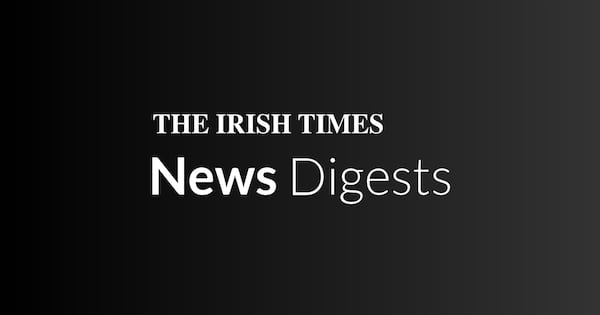Welcome to this week’s On the Money newsletter. The tax collectors of the world have had bad press for as long as they have been collecting tax – and more often than not they have deserved it.
But, at least when it comes to Ireland, they often have our backs. The Revenue Commissioners actively wants to try to give us money back where possible.
That became clear earlier this week when it started an information campaign aimed at highlighting how easy it is to claim tax rebates.
Despite the relative ease with which many people can claim tax back, up to 530,000 people in Ireland failed to lodge a claim in 2024.
Spread over a few years, a lot of people could be missing out on thousands of euro.
Close to €400 million in tax rebates went unclaimed by PAYE workers over the course of 2023, with the cumulative total over the last four years – the time period over which tax rebates can be sought – likely to come close to €1.5 billion.
Revenue’s national PAYE manager Aisling Ní Mhaoileoin said some people “are afraid to engage with” Revenue. She said the purpose of the campaign was to allay those fears and to highlight how easy it is to claim a tax rebate.
So, what do you need to do?
Ideally you should make your claims for 2024 as soon as possible but you can also claim refunds going back four years. So in 2025 you will be able to make claims going back to 2021.
First you register or log into the myAccount section of the Revenue website. To register you will need your PPS number, date of birth, phone number, email address and home address. If you can verify your ID with an Irish driving licence number and information from your payslip, or an income tax notice of assessment, you can access the myAccount service immediately. Otherwise, a temporary password will issued by post.
Once you are in the myAccount section the Revenue site you click on “Complete your Income Tax Return” to finalise your tax position for the year.
Revenue uses all the information it has on record for you to pre-populate your returns so you will only add details of any additional credits or reliefs you are due, or additional income you have earned.
You will have to go through five screens to complete the process but it should take a matter of minutes.
The first covers your personal details. It shows the personal information Revenue has on you, including your marital status and bank account details.
The second screen shows your income which is taxed through the PAYE system.
You should review this information carefully and ensure that it is complete and accurate.
The third screen covers non-PAYE income. It details any income earned outside the PAYE system which Revenue has been advised of.
The fourth screen details the tax credits and reliefs already applied to your account. If you are entitled to additional tax credits and reliefs they can added at this stage.
There are a wide range of tax credits and reliefs available and you can make the relevant adjustments from options available on easy-to-use drop-down menus.
The final page is where you will be asked to declare that all the information you have provided is accurate, and to submit your return.
Once the process is completed, a Statement of Liability will become available confirming if you are entitled to a refund or have an additional liability to pay.
If you are due a refund it will generally be issued to the nominated bank account within a couple of days.
If you have an additional liability, there are various payment options available, depending on the amount due, and Revenue will work with you “to find a mutually agreeable option”.
There are a wide range of tax credits and reliefs available, with a full list on the Revenue’s website.
Here are some of the key ones.
Health expenses
Taxpayers can claim relief on qualifying health expenses incurred, and relief is given at the standard rate of tax, which is 20 per cent.
That means you get €2 back for every tenner you spend on GPs or consultants for yourself or your children. It also offers relief on maternity care, diagnostics such as the cost of scans and blood tests, physiotherapy, and additional food costs faced by coeliacs or diabetics.
Prescriptions and non-routine dental care such as crowns and root canal are also covered. Relief is not available in respect of any elements of the cost which are covered or reimbursed by an insurance policy or other scheme.
Nursing home fees
Taxpayers can also claim tax relief on nursing home fees at their marginal rate – which is 40 per cent if you pay tax at the highest rate – once the nursing home concerned provides 24-hour on-site care. Any amount paid by the HSE in respect of nursing home fees, by way of the Fair Deal Scheme, is excluded when making a claim for relief.
Mortgage interest
The mortgage interest tax credit was introduced under the Finance Act 2023, and is available for the 2023 and 2024 years of assessment only.
The credit is available to taxpayers who had a mortgage balance of between €80,000 and €500,000 outstanding at the end of December 2022, and who paid more interest on their loans in 2023 and 2024 than they did in 2022.
The end-year certificate of interest that your mortgage lender sent in Januarys past will outline what you might get, and if you can’t find the cert from 2023 or 2022, your lender should be able to reissue it. It is worth up to €1,250.
Third-level fees
Families with children in third-level education who are paying more than €3,000 per year in fees are entitled to claim back 20 per cent of anything above that amount. It won’t be worth much to a family with one child in third level but if two children are studying and €6,000 in fees are incurred, the rebate could be worth €600 a year.
Remote working
The remote working relief is available to taxpayers who work remotely from home (on either a full-time or part-time basis), or who have a hybrid or blended working arrangement in place.
This measure provides income tax relief for a portion of the additional utility expenses you incur in working from home, which includes heating, electricity and internet costs.
The relief available is based on the number of days worked from home over the year, and the portion of costs which qualify for relief varies in certain years as follows:
For the 2021 year of assessment, 10 per cent of the individual’s electric and heating bills and 30 per cent of their broadband bills qualified for relief.
For the 2022 year of assessment and subsequent years, 30 per cent of all three bills qualified for relief.
Rent
The rent tax credit is available for the 2022 to 2025 years of assessment inclusive and is currently worth €1,000, falling incrementally for the years before 2024.
You can claim €500 for 2022 and 2023. That means a renter who has never claimed could get back €2,000 while a couple sharing a rented home might be in line for €4,000.

Are we at the beginning of Donald Trump’s global trade war?
If you rent out a room in your home, you may be entitled to an exemption but you must declare the income received from letting the room on your Income Tax Return. If the income from letting the room exceeds €14,000 in a year, then the whole amount is liable to income tax.
Making a claim does require some effort and you might need to assemble some paperwork – the more receipts you upload, the more likely your claim will be expedited without any over and backs with Revenue. But if you put a bit of legwork in, it is likely you will get some money back.
And if you haven’t done anything on your taxes for the last four years you might get as much as €2,000 back. Now that wouldn’t be too shabby for a couple of hours' work, would it?
You can contact us at OnTheMoney@irishtimes.com with personal finance questions you would like to see us address. If you missed last week’s newsletter by Dominic Coyle on how to get the best deal on bin charges, you can read it here















